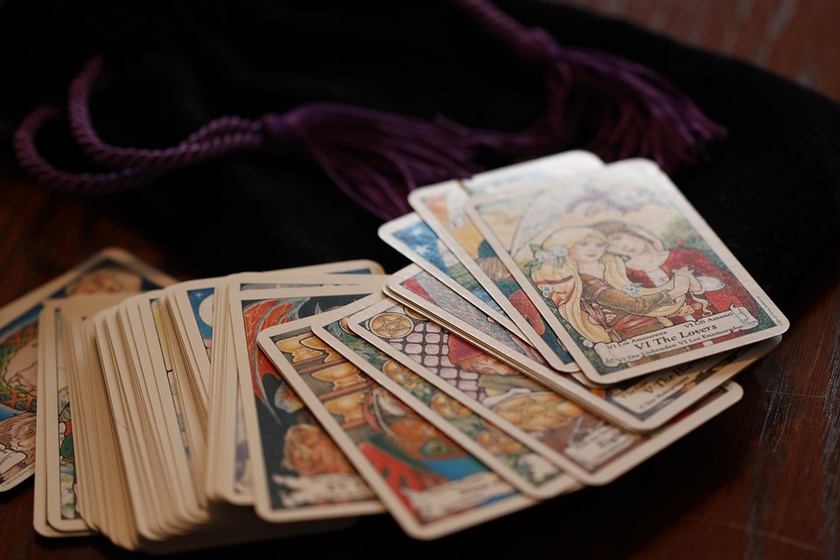In the politicized wasteland of pre-Election Day Cambridge, I found refuge in the Democracy Center. A self-styled “21st century meeting house” on Mt. Auburn St. that hosts off-beat events like metal concerts, the Democracy Center played host to the Pagans and Witches in Greater Boston for a “Spirit to Spirit Psychic Fair” on Oct. 29.
Not one for punctuality, I arrive four hours into the event, which may account for the less-than-stellar attendance. The “fair,” I quickly learn, is not quite a fair. In one large room, seven “readers” sit across from customers, reading palms, flipping tarot cards, and sketching “aura readings.” A given session costs between $25 and $40. The price is a little steep for a student wallet like mine, so I settle into the makeshift waiting room.
A semi-circular nook separated from the main room by glass doors, the waiting room constitutes mostly women dressed in various degrees of Halloween-esque apparel—drapey shawls, fishnet sleeves, lots of orange and black. Most seem to be in their thirties. Two men, a silent one with a mustache and a talkative one with a fancy camera, round out the rest of my pagan companions.
One woman admires her “aura reading,” a printed outline of the human body, in which the psychic has shaded different colors to indicate the “auric signals” she interpreted from parts of the customer’s body. The psychic, apparently, uses these energy readings to divine personality traits and psychological tendencies.
Shelley L. Holloway, founder and leader of the Pagans and Witches in Greater Boston, also does readings, though tonight she mans a display of handmade jewelry at the entrance to the reading room. Holloway started the group just over two years ago. She herself, though, is an old hand at witchcraft—she has been a pagan priestess for almost 30 years since getting her start at a coven in Maine.
With shockingly bright red hair, Holloway is effusive but down-to-earth, and her description of her religion is not so melodramatic as a cynic might expect. She explains pagan rituals as nonchalantly as a rabbi would discuss Friday night prayers. Her passion for witchcraft and “the gods that we work with,” she says, stems from their “sustain[ing]” power.
Working my way around the waiting room, I realize I’m not the only one here to document proceedings. The man with the camera, Josh N. Samson, is a documentary filmmaker from Utah. He’s currently working on a film about witchcraft, and is also a self-identified witch.
It’s actually quite hard to nail down what exactly witchcraft entails. Each person I talk to seems to have a different set of gods and practices. Samson says paganism is more of an umbrella term for any number of religions that worship pre-Abrahamic gods. Other than that, though, there’s a wide discrepancy in beliefs and definitions.
In fact, consensus among the waiting-room crowd is that this flexibility is the most attractive aspect of their religion. The place is practically littered with lapsed Catholics. At one point, Samson says he was brought up in a religion he later rejected. Many, it seems, came to practice witchcraft because it offered a freer, less constricting, spirituality.
“I’ve never heard a pagan proselytize,” Samson says.
As we finish our conversation, two women start to move around furniture and lower the blinds. The crowd of waiting-room visitors swell, which is confusing, because the event is nearly over. A fellow guest explains that these activities are in preparation for a “pagan ritual” the group is hosting once the fair officially closes.
And with that information, I respectfully take my leave.


